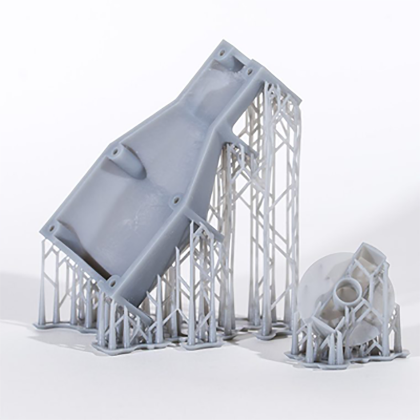Unlocking the Secrets of SLA Rapid Prototyping: Discover How It Can Transform Your Ideas into Reality!
In the fast-paced world of modern manufacturing and design, the ability to quickly transform ideas into tangible products is more critical than ever. One technology that has revolutionized this process is SLA rapid prototyping. Stereolithography (SLA) allows designers and engineers to create high-precision models in a fraction of the time it would take with traditional manufacturing methods. This article aims to explore the significance of SLA rapid prototyping services, how it works, its various applications across industries, and what to look for when selecting a service provider. Whether you're a seasoned professional or a budding entrepreneur, understanding SLA technology could be the key to bringing your innovative ideas to life.

Understanding SLA Rapid Prototyping
SLA, or Stereolithography, is a form of 3D printing that uses a laser to cure liquid resin into solid objects. The process begins with a digital model, which is sliced into thin horizontal layers. A UV laser then traces each layer on the surface of the resin, solidifying it in precise patterns. This process is repeated layer by layer until the object is fully formed. The benefits of using SLA for rapid prototyping are numerous. First and foremost, SLA offers exceptional accuracy, with tolerances as fine as 0.1 mm, making it ideal for intricate designs. Additionally, the speed of SLA allows for quicker turnaround times compared to traditional prototyping methods. With a variety of materials available, such as flexible, durable, and high-temperature resins, SLA provides the versatility needed to meet diverse design requirements. My friend, who works as a product designer, often shares how SLA has cut down her prototyping time significantly, enabling her to focus more on innovation rather than the lengthy production processes of the past.
Applications of SLA Rapid Prototyping
SLA rapid prototyping is utilized across numerous industries, showcasing its versatility and effectiveness. In the automotive sector, for instance, companies use SLA to create functional prototypes for testing vehicle components, ensuring they meet safety and performance standards before mass production. In aerospace, where precision is paramount, SLA allows engineers to produce lightweight yet strong components that can be tested rigorously without the cost of full-scale production. The healthcare industry benefits from SLA by creating custom medical devices and implants tailored to individual patients, vastly improving outcomes. Additionally, consumer products such as electronics and household items leverage SLA technology for rapid design iterations, allowing companies to respond quickly to market demands. A colleague of mine in the healthcare field often shares how SLA has enabled them to create custom surgical guides that improve surgical precision, ultimately enhancing patient care.
Choosing the Right SLA Rapid Prototyping Service Provider
When selecting an SLA rapid prototyping service provider, several key factors come into play. Expertise is crucial; a provider with a strong background in your specific industry can better understand your needs and challenges. Additionally, the technology used by the service provider is essential—look for those who invest in the latest SLA machines and materials, as this often translates to higher quality outputs. Turnaround time should also be a consideration; an efficient provider can deliver prototypes quickly without compromising quality. Lastly, excellent customer support can make a significant difference in your overall experience. Transparent communication and a willingness to adjust to your needs will enhance your collaboration. A friend of mine learned this the hard way when he chose a provider based solely on price, only to face delays and poor communication that set back his project significantly.
The Future of SLA Rapid Prototyping
The landscape of SLA rapid prototyping is continually evolving, with emerging trends and advancements paving the way for future possibilities. New materials, such as biocompatible resins and more sustainable options, are becoming available, expanding the range of applications for SLA. Additionally, advancements in software technology are enhancing design capabilities, allowing for more complex geometries and improved simulation of functional performance. As industries increasingly adopt automation and AI in their processes, SLA technology is poised to integrate with these advancements, further streamlining prototyping and production workflows. This evolution is exciting for those of us in the design and manufacturing fields, as it holds the promise of making product development faster, more efficient, and more environmentally friendly.
Enhancing Product Development with SLA Rapid Prototyping
In summary, SLA rapid prototyping represents a groundbreaking technology that can significantly enhance the product development process. Its ability to convert ideas into high-precision prototypes quickly and efficiently makes it invaluable across various industries. As we've explored, understanding the technology, its applications, and how to choose the right service provider is essential for anyone looking to leverage this innovative method. The future of SLA is bright, with advancements promising to continue transforming how we design and manufacture products. I encourage readers to explore this technology further, as it could be the key to unlocking new possibilities for your own innovative ideas.








